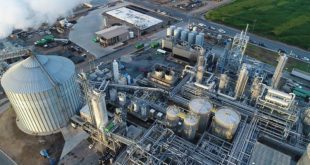Natural gas consumption usually rises and falls with the seasons. In the winter months, we historically have used a lot more natural gas for heating. We are trending towards using natural gas for electricity, in addition to heat. Therefore, we are using more and more natural gas year round. Spikes in the summer are becoming more common than ever now that natural gas is being used for cooling our homes and businesses. The high demand for clean burning, energy efficient natural gas demands that we constantly extract, process and transport natural gas to the areas that need it most. We also must store excess gas so that it is ready for use. We store certain amounts based on projected consumption and we store excess amounts that will ensure that the supply equals or exceeds the demand when natural gas needs spike higher than expected.
We used to mainly consume coal gas. Coal gas was stored in gasometers starting in the mid-eighteenth century. These were large, above-ground tanks that slowly sunk into the ground as the gas stores were depleted. Coal gas was used mainly in towns for lighting, heating and sometimes cooking. Coal gas quickly became widely referred to as town gas. Once large natural gas fields were discovered in the late twentieth century, we ultimately stopped using coal gas. Natural gas is far safer and cheaper than coal gas ever was.
 Alternative Energy HQ solar power for homes, wind energy, and bio fuel issues
Alternative Energy HQ solar power for homes, wind energy, and bio fuel issues






